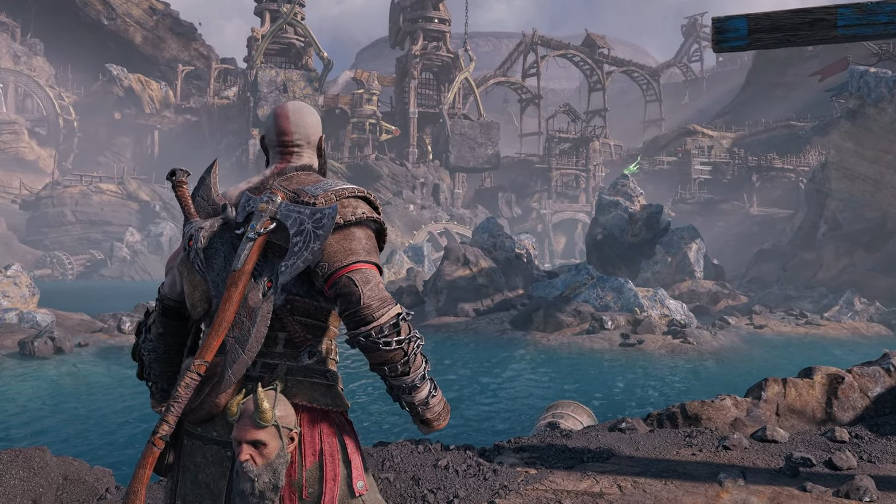The evolution of 3D platformer camera systems in games has become more sophisticated and exciting. Iconic titles like Super Mario, Zelda, and Psychonauts have set high standards, making the camera a crucial part of gameplay. A well-designed camera enhances the player’s experience, adding to the game’s overall charm.
A Brief History of Third-Person Cameras
Third-person cameras have come a long way. Early 3D games, like Super Mario 64, introduced dynamic, player-controlled perspectives, offering greater freedom and immersion. The Legend of Zelda: Ocarina of Time took it further with context-sensitive cameras, adapting to different scenarios seamlessly.

Third-person shooters also played a significant role in evolving camera systems. The need for precise aiming and situational awareness led to more fluid camera controls. This shift is evident in modern action-adventure games. For instance, the *God of War* series moved from a classic static-dynamic narrative camera to a shooter-style camera, enhancing both combat and exploration. lets see how camera tests makes Platformer Camera System Possible!

The Concept of Camera Tests
Camera tests are essential for creating a dynamic, responsive camera system in 3D platformers. These tests run during gameplay, on every frame, or during camera movements to optimize performance and make the camera feel alive. In some games, the camera acts almost like a main character, with unique traits that enhance the overall experience.
Key Components of a 3D Platformer Camera System
To achieve a responsive and intuitive camera system, three essential tests are implemented:
1. Collision Test
– This test ensures the camera doesn’t clip through objects, maintaining a clear view of the player. By using a sphere trace to detect collisions, the camera smoothly adjusts its distance, avoiding obstructions while keeping the player in sight. However, sometimes this rule can be broken to allow players to see the silhouette of the character behind certain objects, enhancing gameplay awareness.
2. Deadzone Test
– The deadzone test stabilizes the camera by defining an area around the character where the camera doesn’t move. This prevents constant camera adjustments during minor movements, providing a stable view and reducing motion sickness. When the character moves out of the deadzone, the camera smoothly repositions itself to recentralize the character.
3. Ground Trace Test
– This test keeps the camera at a consistent height relative to the character and the ground. By tracing the ground beneath the character, the camera adjusts its height dynamically, ensuring it doesn’t float too high or sink too low. This is especially useful for games with varied terrain heights.
The Magic of Interpolation
By using these three tests and interpolating the camera’s location, games achieve a camera system that feels alive and highly responsive to the character’s position. The collision test adjusts the camera smoothly around obstacles, the deadzone test keeps the camera stable yet dynamic, and the ground trace test ensures the camera height is always optimal. Together, these tests create a camera that reacts fluidly to gameplay, enhancing the player’s control and immersion.
Implementation and Benefits
1. Collision Test: Enhances gameplay clarity by preventing visual obstructions.
2. Deadzone Test: Offers a stable and comfortable viewing experience, crucial for player comfort.
3. Ground Trace Tes*: Maintains consistent camera height, ensuring smooth transitions over varied terrain.

How Camera Tests Enhance Game Experience
These three tests combined create a dynamic and responsive camera system that significantly enhances the player’s experience in 3D platformer games:
1. Creating an Immersive Experience: By avoiding visual obstructions through the collision test, players remain fully immersed in the game world, never losing sight of their character during critical moments.
2. Reducing Player Discomfort: The deadzone test stabilizes the camera, preventing constant, jarring movements that can lead to motion sickness or discomfort, especially during intense gameplay sequences.
3. Ensuring Smooth Navigation**: The ground trace test ensures the camera maintains an appropriate height, providing a smooth and consistent view of the environment, which is essential for navigating complex terrain and planning jumps or maneuvers.
A Balanced Perspective
To be honest, while dynamic camera systems are seen as a significant advancement by game designers, they don’t always meet players’ expectations perfectly. These systems can offer a unique experience compared to classic third-person views, but this doesn’t necessarily mean they are the ideal way to create a platformer. There are always trade-offs, and the right approach depends on the specific needs and goals of your game.

